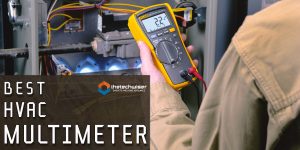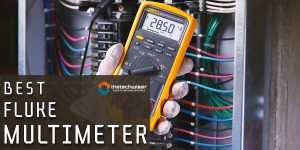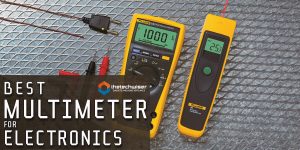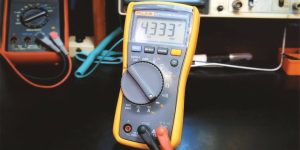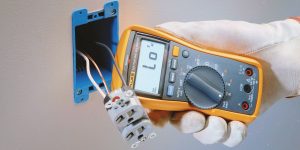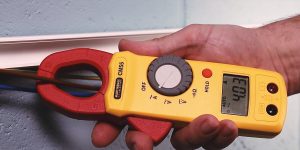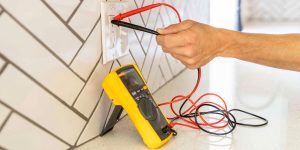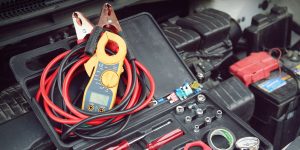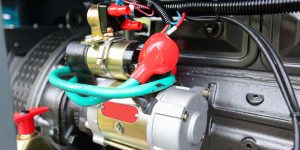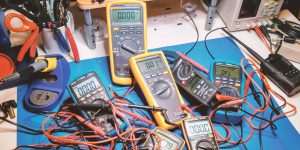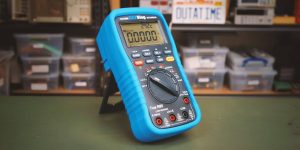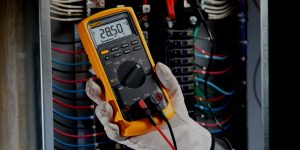So, you’re diving into the world of electronics, tinkering with circuits, or maybe even embarking on DIY projects that involve electrical components. One essential gadget in your toolkit should be a multimeter, an all-in-one device that measures voltage, current, resistance, and more. However, finding the best budget multimeter that is reliable and functional can be a challenge. Don’t worry because I did all the dirty work for you, and in this review, I have collected the most interesting models from the budget category.

Budget multimeters comparison table
| Name | AC voltage | DC voltage | DC millivolts | DC amps | Review |
|---|---|---|---|---|---|
| Klein Tools MM400 best overall | 600V/1V (± 2.0% + 5) | 600V/1V (± 1.5% + 3) | 400mV/0.1mV (± 1.2% + 3) | 4A/0.01A (± 1.5% + 5) | Review |
| INNOVA 3320 also a great choice | 600V/1V (± 0.8% + 5) | 600V/1V (± 1.2% + 5) | 200mV/0.1mV (± 1.2% + 3) | (± 2.0 % + 5) | Review |
| Fluke 101 portable | 600V/0.1V (± 3% + 3) | 600V/0.11V (± 0.5% + 3) | 200mV/0.1mV (± 1.2% + 3) | N/A | Review |
| AstroAI AM33D the most budget | 500V/1V (± 0.8% + 3) | 500V/1V (± 2.0% + 10) | 200mV/0.1mV (± 0.5% + 3) | 10A/0.01A (± 2.5 % + 5) | Review |
What to expect from a budget multimeter?
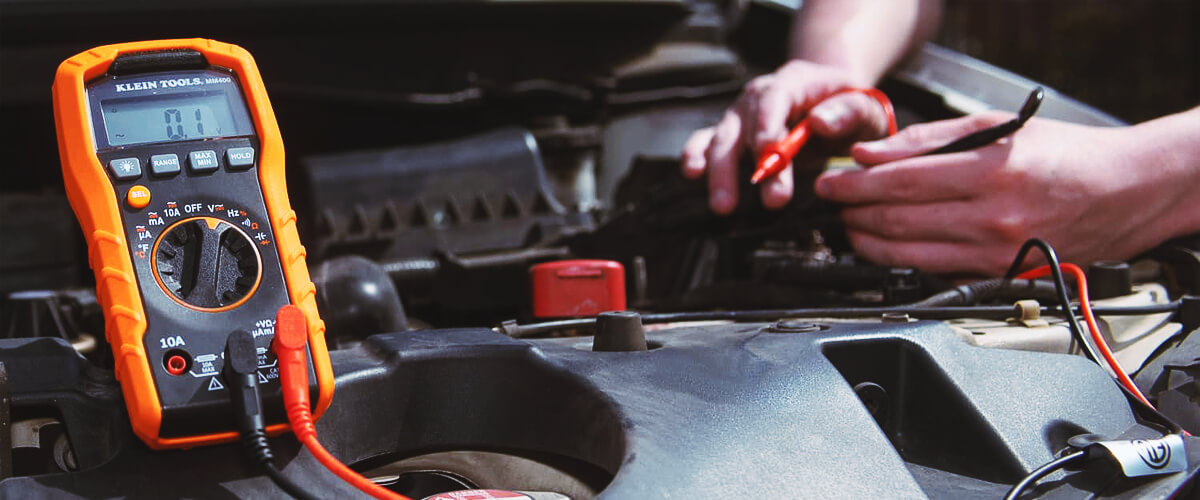
So, what exactly can you expect from a budget multimeter? First off, let’s talk about the essentials: you’ll be able to measure voltage (AC and DC), current (Amps), and resistance (Ohms). These are the bread and butter of most electrical diagnostics. Using budget tools, I’ve personally troubleshooted everything from home appliances to simple electronic circuits. They’re great for basic tasks like checking battery voltage or finding out if a fuse has blown.
However, there are some bells and whistles you may have to forgo. Features like True RMS, data logging, or advanced wireless connectivity are often the domain of pricier models. In terms of the price range, most budget tools can be bought for around $20 to $50, although it can vary based on your location, manufacturer, and some other features.
Now, let’s talk about analog vs digital. Both types exist in the budget range, each with pros and cons. Analog multimeters are often simpler and can be quicker for spotting trends and fluctuations. However, they may lack the precision and ease of readout that a digital multimeter provides. Using both types, I’ve found that analog can be more than sufficient for basic tasks or for hobbyists just getting started. But for more complex, intricate work where exact measurements are critical, a digital multimeter is the way to go.
If you find yourself needing a tool for specialized tasks, such as automotive or complex electronics work, I’ve got you covered. Check out my other articles on the best multimeter for automotive and best multimeter for electronics, where you’ll find models better suited for more advanced jobs.
How did I test?
When it comes to choosing the best value multimeter, hands-on testing is the ultimate judge. My process started with thorough research to compile a list of popular budget multimeters available on the market. I considered factors such as brand reputation, user reviews, and the features offered by each multimeter.
Testing criteria:
- Accuracy and precision
- To evaluate the accuracy and precision, I compared the multimeter readings against known reference values. This included measuring voltages, currents, and resistances across various ranges. Having done this, I noticed that while most budget multimeters are quite accurate for everyday tasks, there are some discrepancies regarding high-precision requirements.
- Measurement range
- I assessed the accuracy and reliability of measurements throughout the full range of capabilities for each multimeter. This encompassed both low and high-level measurements. I found that most budget multimeters are robust in their primary ranges but can lose a bit of their accuracy at extreme ends.
- User experience assessment
During the testing phase, I also paid attention to the overall user experience and looked at factors such as:
- Display clarity.
- Ease of using selectors and buttons.
- Convenience and quality of provided test probes.
Best budget multimeter reviews
Klein Tools MM400 – best overall

I will not change my long-standing traditions and will start with the leader of my review. As an experienced electrician who has personally tested the Klein Tools MM400 multimeter, I can confidently say that this device is one of the best overall multimeters under 50 dollars that you can find on the modern market. It is capable of performing basic measurements such as AC and DC voltage, current, and resistance. I have found the measurement range is also quite extensive, allowing for versatility in various electrical tasks.
In terms of build quality and durability, the MM400 impresses. It is evident that Klein Tools has prioritized the construction of this multimeter, as it feels sturdy and well-made. This durability is essential for withstanding the demands of professional use, ensuring that the multimeter can withstand the rigors of daily work.
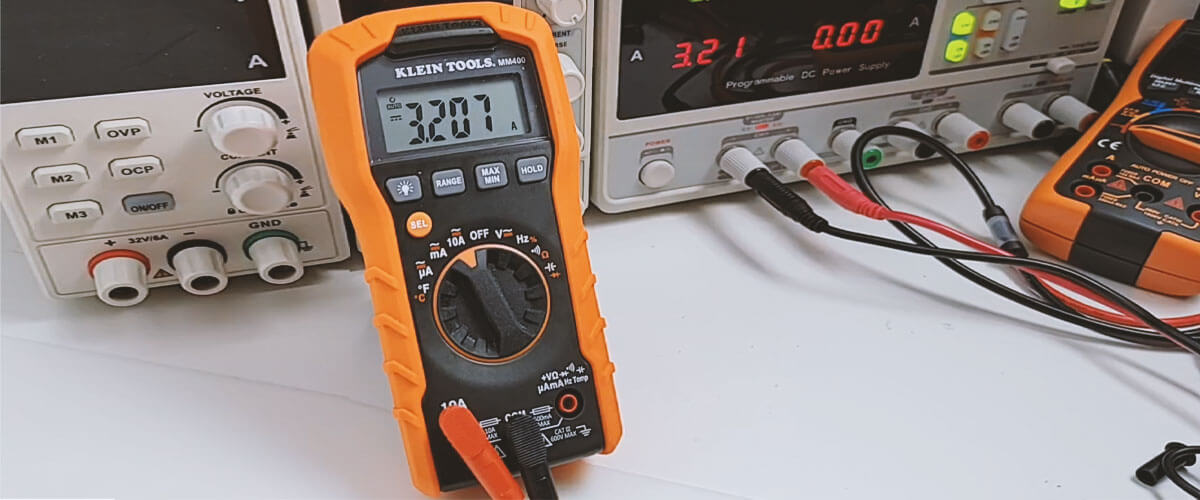
The auto-ranging function simplifies the measurement process by automatically selecting the appropriate range for the task at hand. Additionally, the multimeter features a built-in kickstand and LED backlight, enhancing usability in various working conditions.
Using the MM400 multimeter, I have come to the conclusion that it is an exceptional tool that offers a wide range of capabilities. I highly recommend the MM400 for anyone in need of a reliable and versatile multimeter for their electrical tasks. It is the undisputed leader in all respects in the budget segment!
Key specs
- AC voltage: 600V/1V (± 2.0% + 5).
- DC voltage: 600V/1V (± 1.5% + 3).
- DC millivolts: 400mV/0.1mV (± 1.2% + 3).
- DC amps: 4A/0.01A (± 1.5% + 5).
- Capacitance, nF: 400/0.1 (± 3.0% + 5).
- Resistance, Ohm: 400/0.1 (± 1.5% + 5).
- Size, cm/in: 15.3×7.8×4.5/6.x3x1.7.
- Weight, g: 231.
Pros
- Versatile and plenty of features for a budget model.
- Auto-ranging for quick and easy readings.
- Built-in kickstand and LED backlight for enhanced usability.
Cons
- May lack some advanced safety features found in higher-end models.
INNOVA 3320 – also a great choice
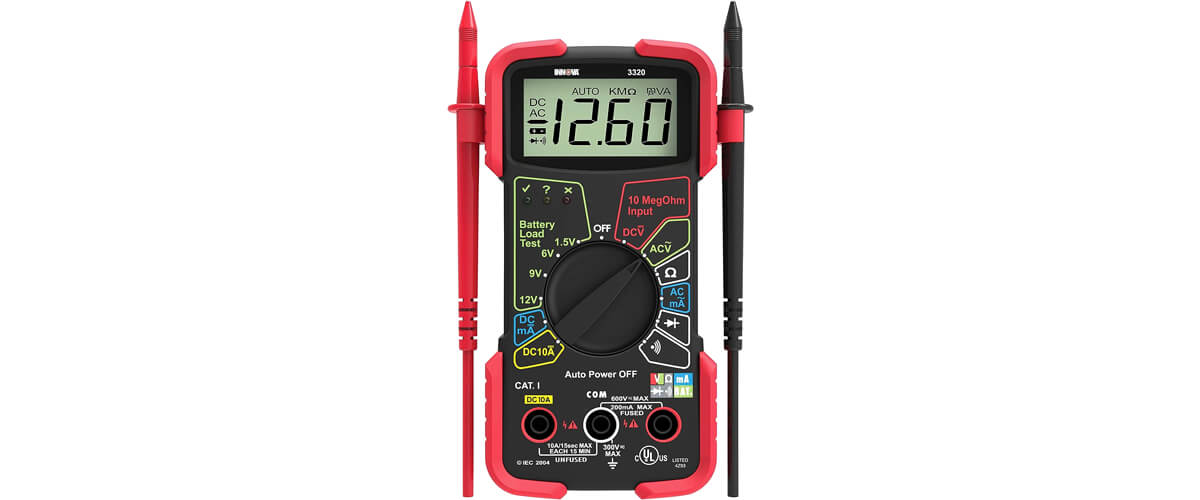
The next tool I want to represent you is the INNOVA 3320 multimeter. It offers a range of basic measurements, allowing for the diagnosis of faults in home wiring, electrical appliances, and electronic circuitry. It is also suitable for basic computer network testing and is specifically tailored for testing batteries.
One notable feature of the INNOVA 3320 is its large and clear display, which makes it easy to read and interpret measurements. The auto-ranging function is another useful feature, especially considering the cost of the multimeter. It simplifies the measurement process by automatically selecting the appropriate range.
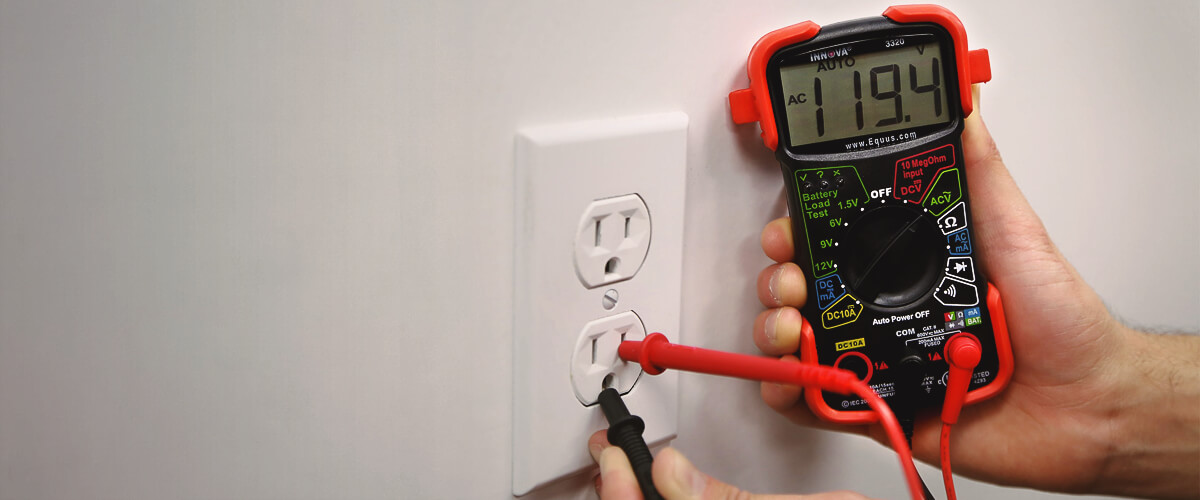
In terms of safety features, the INNOVA 3320 does not specifically mention overload protection in the available search results. However, it is always important to exercise caution and follow proper safety protocols when working with electrical measurements.
Overall, the INNOVA 3320 is a budget-friendly multimeter that offers a range of features and capabilities, making it one of the best multimeters for the money. It is particularly well-suited for DIY enthusiasts and those in the automotive industry. Although it may lack the bells and whistles of more expensive models, it offers a solid performance for the price and can be depended upon for a range of electrical activities.
Key specs
- AC voltage: 600V/1V (± 0.8% + 5).
- DC voltage: 600V/1V (± 1.2% + 5).
- DC millivolts: 200mV/0.1mV (± 1.2% + 3).
- DC amps: 2A/0.01A (± 2.0 % + 5).
- Capacitance, nF: 400/0.1 (± 3.0% + 5).
- Resistance, Ohm: 200/0.1 (± 1.0% + 5).
- Size, cm/in: 5×25.4×12.7/2x10x5.
- Weight, g: 226.
Pros
- Large and clear display.
- Auto-ranging function.
- Capable of performing most basic measurements.
- Handy battery test function.
Cons
- May not be as accurate as more expensive models.
- Not suitable for testing high amperage AC circuits or three-phase systems.
- May lack some advanced features found in higher-end models.
Fluke 101 – portable

One more good, inexpensive multimeter is Fluke 101. Its compact size and lightweight design make it easy to carry around and ideal for on-the-go professionals or those who need to work in tight spaces.
The Fluke 101 digital multimeter is capable of performing basic measurements. The measurement range is also sufficient for most common electrical tasks.
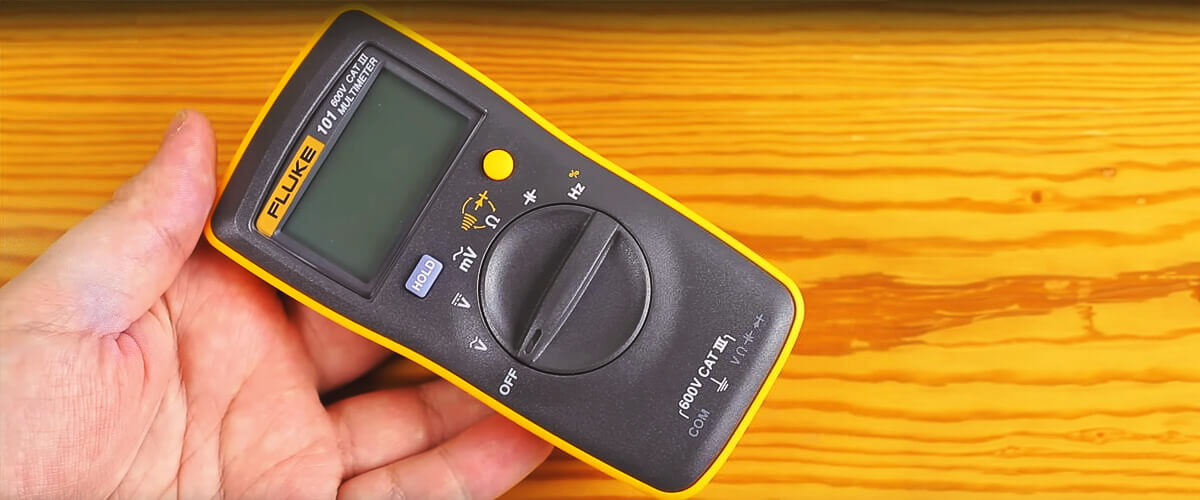
In terms of build quality and durability, the Fluke 101 lives up to the reputation of the Fluke brand. It is well-built and can withstand the demands of daily use. The sturdy construction ensures that it can handle the rigors of professional work environments.
The user-friendly design of the Fluke 101 is another standout feature. The tool is straightforward to operate, with a simple interface and intuitive controls. The clear display provides easy-to-read measurements, even in low-light conditions.
Overall, the Fluke 101 is a good, cheap multimeter that offers accurate measurements, durability, and user-friendly features. Its compact size and convenient design make it a great choice for professionals who need a portable solution for their electrical measurements.
Key specs
- AC voltage: 600V/0.1V (± 3% + 3).
- DC voltage: 600V/0.11V (± 0.5% + 3).
- DC millivolts: 200mV/0.1mV (± 1.2% + 3).
- DC amps: N/A.
- Capacitance, nF: 500/0.1 (± 3.0% + 5).
- Resistance, Ohm: 400/0.1 (± 1.0% + 5).
- Size, cm/in: 13×6.5×2.7/5.1×2.5×1.
- Weight, g: 160.
Pros
- Lightweight and portable design.
- Reliable and accurate measurements.
- Durable and well-built construction.
- No need for expensive fuses.
Cons
- Limited functionality compared to other Fluke models.
- May not be suitable for precise dedicated jobs.
AstroAI AM33D – the most budget
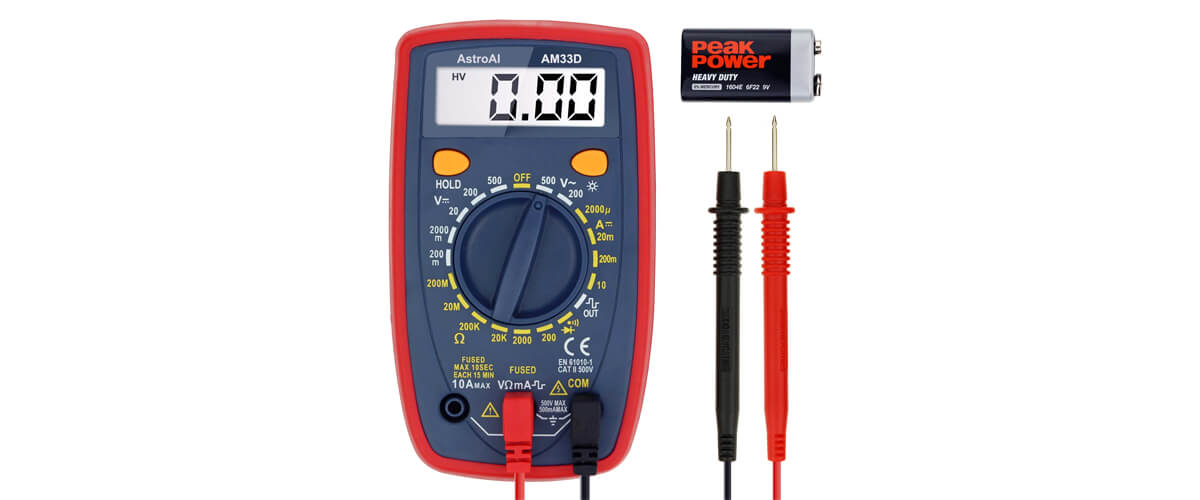
One more multimeter that I liked during testing is the AstroAI AM33D. It can measure AC and DC voltage, current, and resistance. After using the AstroAI AM33D, I found its readings generally accurate and consistent, especially considering its price point. I cross-referenced its measurements with known values and was pleasantly surprised by its performance. And imagine that this device is the cheapest in my review. Not bad, right?
Also, the AM33D scores high in user experience. The display is crisp and easy to read, even in low-light conditions, thanks to its backlight. The selector knob and buttons are intuitively placed, making it easy to switch between different measurements.
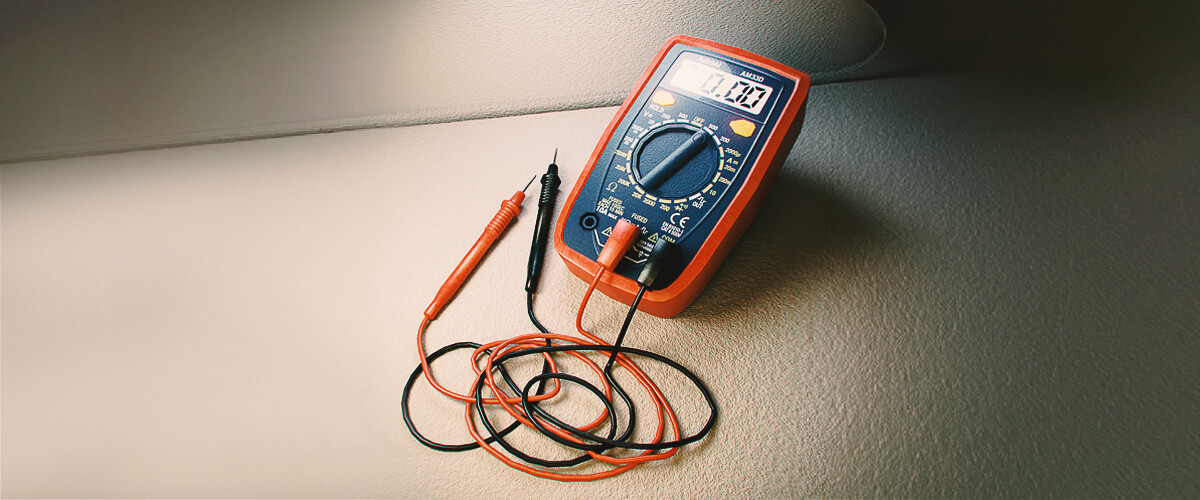
In terms of safety features, this model is equipped with overload protection. This helps prevent damage to the tool and ensures user safety during high-voltage situations.
Overall, the AstroAI AM33D is the best cheap multimeter that offers basic measurements, decent accuracy, and user-friendly features. If you’re a beginner or a hobbyist looking for a multimeter that offers a balance between cost and functionality, the AstroAI AM33D is an optimal choice. It may not meet the needs of a professional requiring high precision, but for basic electrical tasks, it’s an excellent pick.
Key specs
- AC voltage: 500V/1V (± 0.8% + 3).
- DC voltage: 500V/1V (± 2.0% + 10).
- DC millivolts: 200mV/0.1mV (± 0.5% + 3).
- DC amps: 10A/0.01A (± 2.5 % + 5).
- Capacitance, nF: 400/0.1 (± 3.0% + 5).
- Resistance, Ohm: 200/0.1 (± 1.5% + 5).
- Size, cm/in: 13×7.3×3.7/5.1×2.8×1.4.
- Weight, g: 145.
Pros
- Easy and safe to operate.
- Compact and portable design.
- Backlit LCD for visibility in dimly lit areas.
- Continuity, transistor, and diode testing capabilities.
Cons
- Limited measurement range compared to higher-end multimeters.
- Build quality may not be as durable as higher-end models.
- Instructions may not be as clear or comprehensive.
Crenova MS8233D
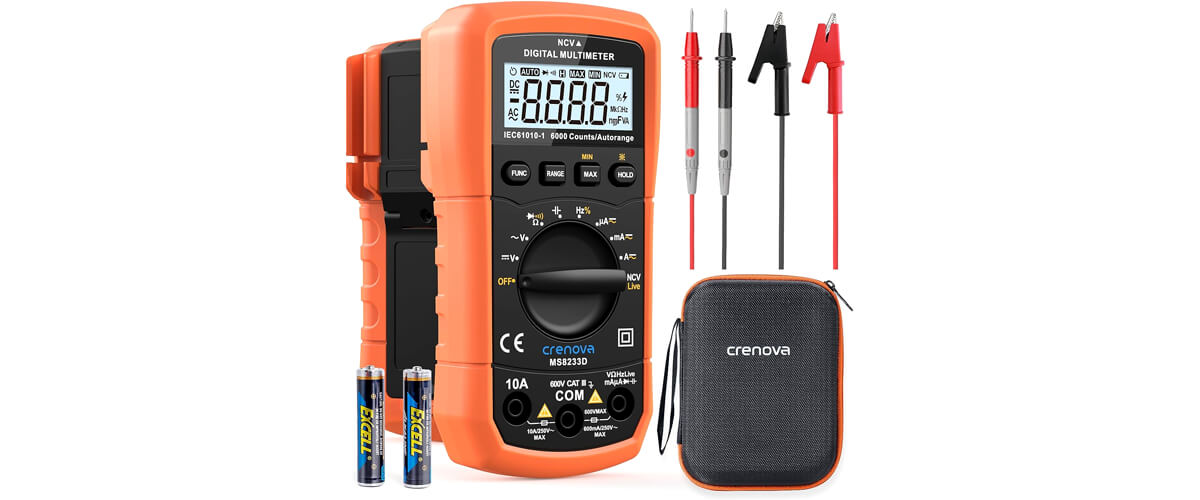
And the last but not the worst is Crenova MS8233D. It can also measure AC and DC voltage, current, and resistance. The accuracy of the Crenova MS8233D is reliable for its price range.
The build quality and durability of the Crenova MS8233D are decent for its price. While it may not be as durable as more expensive models, it still offers satisfactory performance for everyday use.
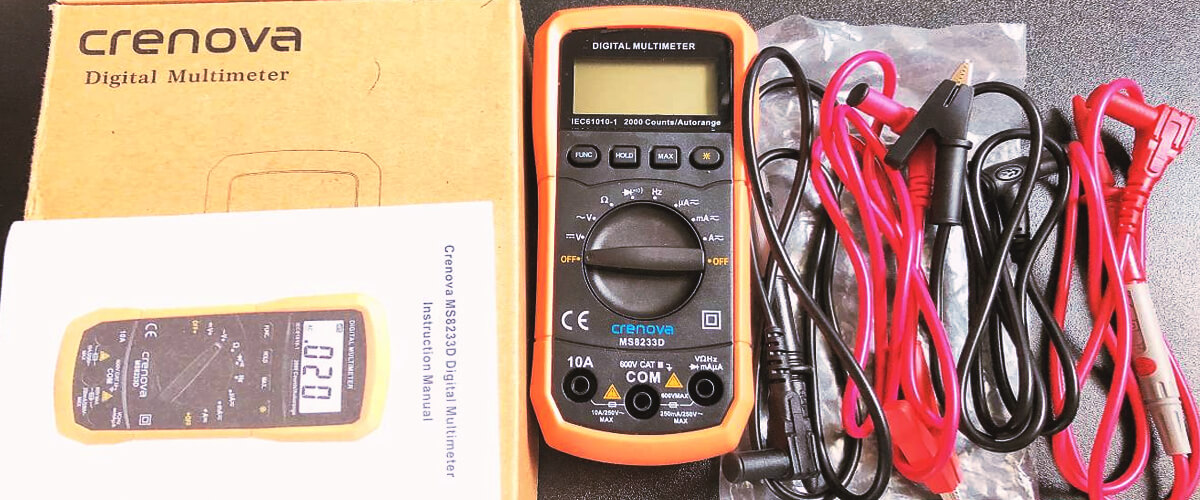
The user-friendly design of the Crenova MS8233D is another positive aspect. It features a simple interface and intuitive controls, making it easy to operate. The clear display ensures that measurements are easily readable, even in low-light conditions. In various hard-to-reach and dark places, it never let me down.
Overall, the Crenova MS8233D is one of the best low-cost multimeters that offers basic measurements, decent accuracy, and user-friendly features. While it may not have all the advanced features of higher-end models, it provides good value for its cost and is a reliable tool for various electrical tasks.
Key specs
- AC voltage: 600V/1V (± 0.5% + 7).
- DC voltage: 600V/1V (± 1.0% + 12).
- DC millivolts: 200mV/0.1mV (± 0.5% + 3).
- DC amps: 10A/0.01A (± 2.5 % + 5).
- Capacitance, nF: 600/0.1 (± 3.5% + 20).
- Resistance, Ohm: 600/0.1 (± 0.8% + 5).
- Size, cm/in: 16.7×6.8×3.8/6.6×2.7×1.5.
- Weight, g: 320.
Pros
- Auto-ranging feature for convenient measurements.
- Clear and easy-to-read display with backlight.
- Suitable for DIY enthusiasts and general electrical work.
Cons
- The build quality might not match that of more premium models.
- The instructions may lack clarity and comprehensiveness.
Popular misconceptions about low-cost multimeters
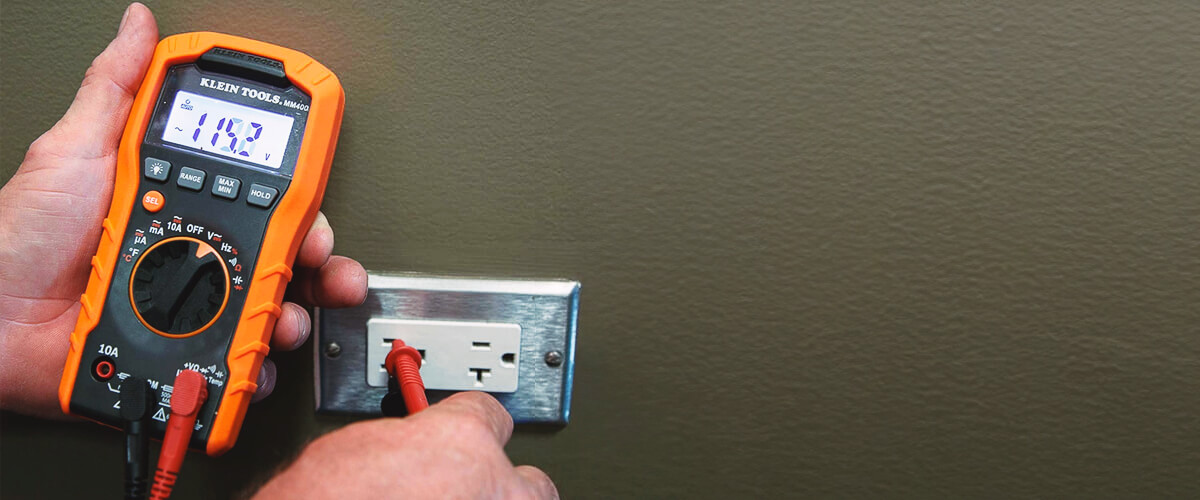
The landscape of electrical tools is fraught with myths and misunderstandings, especially regarding budget options like affordable multimeters. Below, let’s address and debunk some of the most prevalent misconceptions.
Budget multimeters are inaccurate and unreliable
- The myth: Many people believe that cheap digital multimeters are not reliable or accurate.
- The reality: While high-end models do offer higher precision and more features, many budget tools are surprisingly accurate for everyday tasks.
- My experience: In my own tests, I’ve found that most budget multimeters offer more than acceptable accuracy for household and automotive tasks. They may not be lab-grade, but they’re usually sufficient for most DIY and hobbyist needs.
Auto-Ranging multimeters are always better than manual-ranging ones
- The myth: The prevailing opinion is that auto-ranging models are inherently superior because they automatically select the best range for your measurements.
- The reality: While auto-ranging can be more convenient, manual-ranging models often give quicker readings and allow for greater control over the measurement process.
- My experience: I’ve found manual-ranging multimeters to be generally cheaper and, in the hands of someone who understands their operation, just as effective as auto-ranging ones.
Budget multimeters are not durable and won’t last long
- The myth: There’s a common belief that low-cost multimeters are made of inferior materials and will fall apart or fail quickly.
- The reality: While budget tools may lack the robust build quality of premium models, many are built to be surprisingly durable.
- My experience: I’ve dropped budget multimeters more times than I dare to admit, and they’ve mostly remained functional. While they might not last a lifetime, they can certainly serve well for several years if taken care of.
FAQ
How accurate are budget multimeters compared to higher-end models?
What’s the difference between auto-ranging and manual-ranging multimeters?
Are budget multimeters safe to use?
Are budget multimeters suitable for professional electricians?
We are supported by our audience. When you purchase through links on our site, we may earn an affiliate commission at no extra cost to you.
Our newsletter
* We will never send you spam or share your email with third parties

